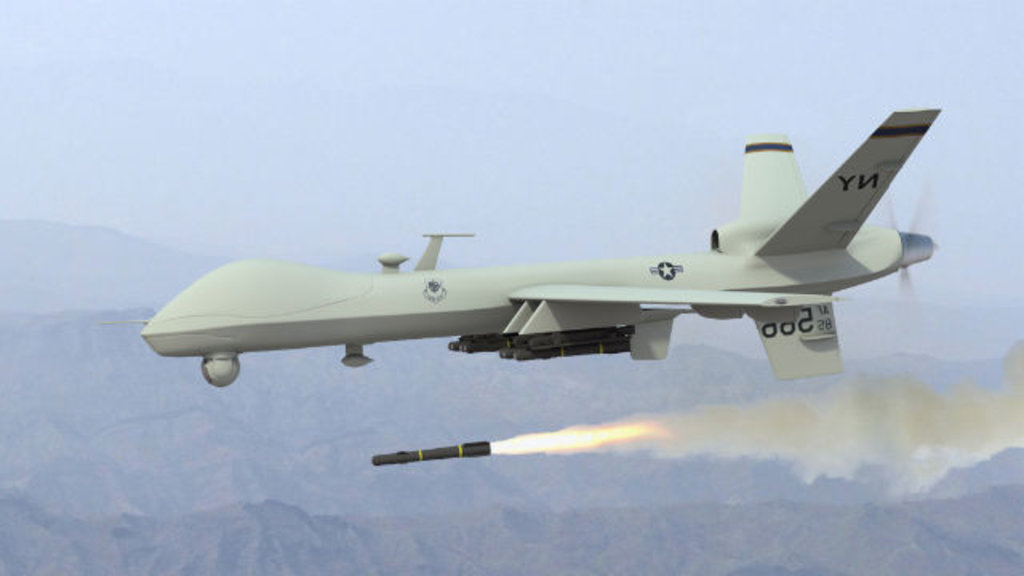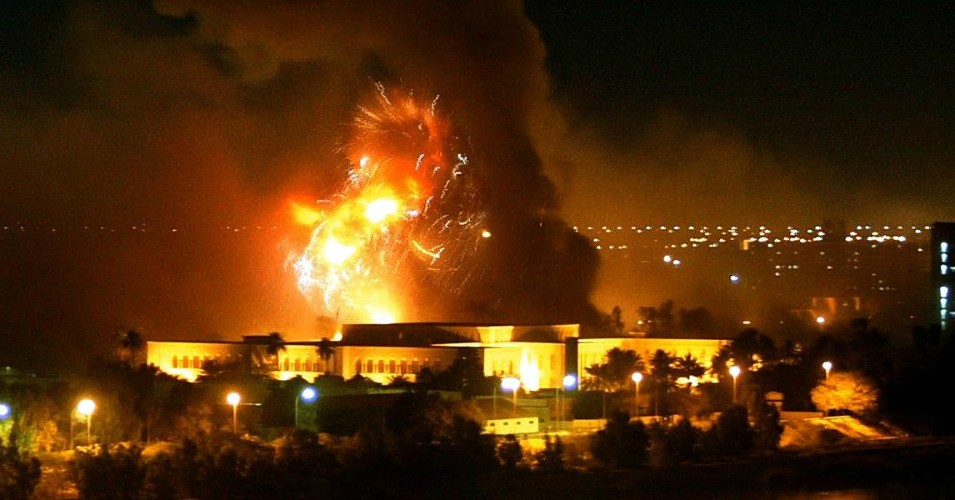
The U.S. military drastically undercounted civilian deaths caused by airstrikes in the Middle East since 2014, according to a New York Times investigation published Saturday.
The New York Times reviewed a hidden Pentagon archive comprised of the military’s confidential assessments of over 1,300 reports of civilian casualties in airstrikes, and found, “since 2014, the American air war has been plagued by deeply flawed intelligence, rushed and imprecise targeting and the deaths of thousands of civilians, many of them children. There was and a lack of accountability for wrongdoing.
While the official military count says 1,417 civilians have been killed in Iraq and Syria, the investigation found many more civilian deaths, citing multiple examples, though it did not provide an exact count.
The New York Times found examples of the U.S. forces not disclosing the mistaken killing of civilians during airstrikes. In 2017, a family of four in a car that were fleeing West Mosul, Iraq, and three other civilians were killed after the vehicle was mistaken as a car bomb.
Last month, The Times revealed that military leaders hid a 2019 airstrike in Syria where as many as 64 civilians were killed.
Earlier this year, a report compiled by an independent monitoring group found that the U.S. airstrikes have killed as many as 48,000 civilians since the 9/11 terrorist attacks.
The New York Times report (What to Know About the Civilian Casualty Files, by Michael Levenson) said:
“In the years since American boots on the ground gave way to a war of airstrikes in Iraq, Syria and Afghanistan, the U.S. military has made a central promise: that precision bombs and drones would kill enemies while minimizing the risks to civilians.
“Recent investigations by The New York Times have undercut that promise. In September, The Times reported that a drone strike in Kabul, Afghanistan, which U.S. officials said had destroyed a vehicle laden with bombs, had instead killed 10 members of a family. Last month, The Times reported that dozens of civilians had been killed in a 2019 bombing in Syria that the military had hidden from public view.
“Now, a Times investigation has found that these were not outliers but rather the regular casualties of a transformed way of war gone wrong.”
It said:
“In addition to reviewing the military’s assessments of reports of civilian casualties — obtained through Freedom of Information requests and lawsuits against the Defense Department and U.S. Central Command — The Times visited nearly 100 casualty sites in Iraq, Syria and Afghanistan and interviewed scores of surviving residents and current and former U.S. officials.”
Following are key takeaways from Part 1 of the investigation:
Civilian Deaths Have Been Drastically Undercounted
According to the military’s count, 1,417 civilians have died in airstrikes in the campaign against ISIS in Iraq and Syria; since 2018 in Afghanistan, U.S. air operations have killed at least 188 civilians. But The New York Times found that the civilian death toll was significantly higher. Discrepancies arose in case after case — none more stark than a 2016 bombing in the Syrian hamlet of Tokhar.
U.S. Special Operations forces hit what they believed were three ISIS “staging areas,” confident they were killing scores of ISIS fighters. A military investigation concluded that seven to 24 civilians “intermixed with the fighters” might have died. But, The Times found, the targeted buildings were houses where families had sought refuge. More than 120 civilians were killed.
In 1,311 Reports, One ‘Possible Violation’
The Pentagon has also failed to uphold pledges of transparency and accountability.
Until now, only a handful of the assessments have been made public. None included a finding of wrongdoing or disciplinary action. Only one cited a “possible violation” of the rules of engagement — a breach in the procedure for identifying a target. Fewer than a dozen condolence payments were made, even though injured survivors often required costly medical care. The records show little effort by the military to identify patterns of failure or lessons learned.
In many instances, the command that had approved a strike was responsible for examining it, often using incorrect or incomplete evidence. In only one case did investigators visit the site of a strike. In only two did they interview survivors or witnesses.
Taken together, the 5,400 pages of records point to an institutional acceptance of civilian casualties. In the logic of the military, a strike was justifiable as long as the expected risk to civilians had been properly weighed against the military gain, and it had been approved up the chain of command.
Over 50,000 Airstrikes, Most Not Planned in Advance
America’s new way of war took shape after the 2009 surge of U.S. forces into Afghanistan. By the end of 2014, President Barack Obama declared America’s ground war essentially done, shifting the military’s mission to mostly air support and advice for Afghan forces battling the Taliban. At roughly the same time, he authorized a campaign of airstrikes against ISIS targets and in support of allied forces in Iraq and Syria.
At an ever-quickening pace over the next five years, and as the administration of Obama gave way to that of Donald Trump, U.S. forces executed more than 50,000 airstrikes in Iraq, Syria and Afghanistan.
When the wars intensified, the authority to approve strikes was pushed further down the chain of command, even as an overwhelming majority of strikes were carried out in the heat of war, and not planned far in advance.
Biases and Blind Spots Created Danger
The records suggest that civilian deaths were often the result of “confirmation bias,” or the tendency to find and interpret information in a way that confirms preexisting beliefs. People rushing to a bombing site were assumed to be ISIS fighters, not civilian rescuers. Men on motorcycles, thought to be moving “in formation,” displaying the “signature” of an imminent attack, were just men on motorcycles.
Cultural blind spots also left innocent civilians vulnerable to attack. The military judged, for example, that there was “no civilian presence” in a house where families were napping during the days of the Ramadan fast or sheltering from the heat or intense fighting.
Breakdowns In Technology And Surveillance
For all their promise of pinpoint accuracy, at times U.S. weapons simply missed. In 2016, the military reported that it had killed Neil Prakash, a notorious Australian ISIS recruiter, in a strike on a house in East Mosul. Four civilians died in the strike, according to the Pentagon. Months later, Prakash was arrested crossing from Syria into Turkey.
Poor or insufficient surveillance footage often contributed to deadly targeting failures. Afterward, it also hamstrung efforts to examine strikes. Of the 1,311 reports examined by The Times, the military had deemed 216 allegations “credible.” Reports of civilian casualties were often dismissed because video showed no bodies in the rubble, yet the footage was often too brief to make a reliable determination.
Sometimes, only seconds’ worth of footage was taken before a strike, hardly enough for investigators to assess civilians’ presence. In some other cases, there was no footage at all for review, which became the basis for rejecting the allegation. That was often because of “equipment error,” because no aircraft had “observed or recorded the strike,” or because the unit could not or would not find the footage or had not preserved it as required.
Failure To Account For Secondary Explosions
A target such as a weapons cache or power station came with the potential for secondary explosions, which often reached far beyond the expected blast radius. These accounted for nearly one-third of all civilian casualties acknowledged by the military and half of all civilian deaths and injuries at the sites visited by The Times.
A June 2015 strike on a car-bomb factory in Hawija, Iraq, is among the deadliest examples. In plans for the nighttime attack, the nearest “collateral concern” was assessed to be a “shed.” But apartment buildings ringed the site, and dozens of displaced families, unable to afford rent, had also been squatting in abandoned buildings close by. According to the military investigation, as many as 70 civilians were killed that night.
In response to questions from The Times, Capt. Bill Urban, the spokesperson for the U.S. Central Command, said that “even with the best technology in the world, mistakes do happen, whether based on incomplete information or misinterpretation of the information available. And we try to learn from those mistakes.” He added, “We work diligently to avoid such harm. We investigate each credible instance. And we regret each loss of innocent life.”
















































